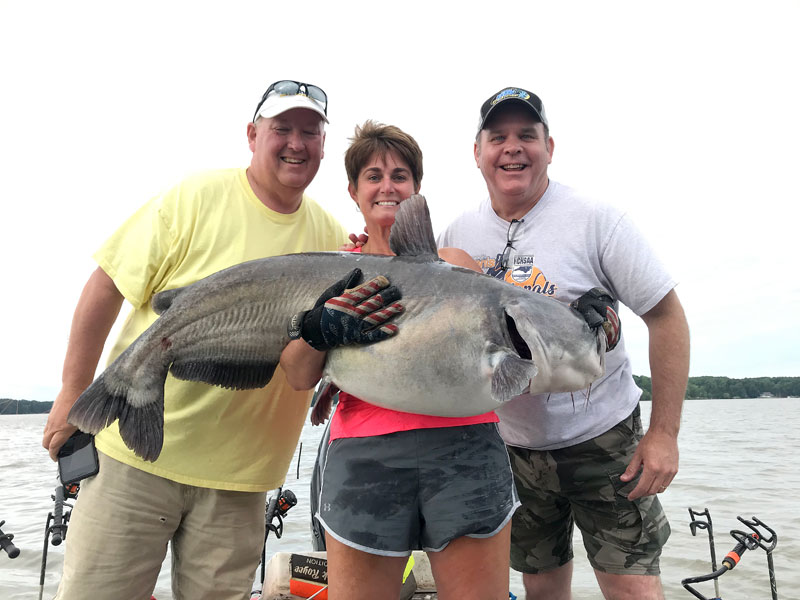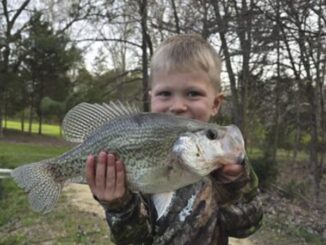
Lake Gaston blues are biting strong
Catfish are synonymous with summertime fishing and there’s no better month than August and no better place than Lake Gaston — where big blues have left the spawn in the dust and are ready to devour a properly-placed bait. Guide Zakk Royce of Gasburg, VA will be there with a spread of rigs to tempt fish from the shallows to deep water.
“In August, all of the blues will be off the spawn,” said Royce (252-398-7192), who runs Blues Brothers Catfish Guide Service. “This makes it a good month for big fish because the biggest blues are later coming off the spawn. And they’re going to be hungry. The fish will typically move up into shallower water to feed aggressively. And then back into deeper water during the heat of the day. But they can be caught in both places.”
Royce will make his shallowest presentation during the early morning when the water is at its coolest. Around main lake points, flats and humps he pulls baits in depths as skinny as 5 to 10 feet. He gradually moves deeper to 15, 20, 25 feet around the same areas as the sun gets up and the water warms.
Shad and perch both work
The business end of Royce’s lines are pulling Santee rigs so that he can troll snag free in any depth of water. And about half of these lines will have a slip float or a planer board. In 5 to 10 feet, all baits will drag bottom. But as he trolls into deeper water, these baits will suspend at different depths to appeal to fish throughout the water column. As he moves toward the ledges of the main river channel and much deeper water, he rigs all baits to suspend above the thermocline which generally establishes between 30 and 40 feet deep.
“I like to run a 50/50 mix with cut gizzard shad and white perch for bait,” said Royce. “And I also mix up the sizes of the baits I’m using. Blues eat a lot of mussels on the points this time of year and they’re more likely to notice a small bait if that’s what they’re keyed in on. A lot of days, I’ll catch the biggest fish on the smallest bait.
“The fish are going to be spread out. But you can troll faster in the summer because their metabolism is going to be sped up,” said Royce.. “The 0.5 mph range is a good rule of thumb. But I’ve caught them trolling for stripers at 2.5 to 3 mph. So I know they’ll chase a bait. When I’m searching for fish, I’ll run from 1 to 1.5 mph and then slow down when I find them.”





Be the first to comment